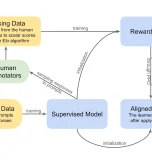For both researchers and businesses, the ability to process or gather data from various sources is crucial. Data acquisition is essential for this task and when executed effectively, it significantly improves the capacity to collect, analyse, and utilise data for a competitive edge.
Conducting data acquisition manually is often slow and leads to imperfect results. Automating data acquisition through AI can help to solve these challenges by accelerating processes, improving accuracy, and reducing human efforts.
In this blog, we’ll explore the fundamentals of data acquisition and how automation is transforming it.
What is Data Acquisition & its Key Components?
Data acquisition is a process in which data is collected by scraping from various sources, including databases, data lakes, storage systems, and many more. The main goal is to collect accurate or relevant data to extract meaningful insights to perform accurate experiments or research.
In short, it works as a key step in the data processing and converts raw data into a structured format that can be easily analysed. It is based on multiple stages, like collecting, transmitting, storing, and processing data for analysis & reporting.
Here is the breakdown of major data acquisition components:
| Data Acquisition Stages | Explanation |
| Find Data Sources | This is the initial stage where you need to identify sources to collect any data, e.g., sensors, databases, etc.. |
| Data Collection | Now, the focus is on gathering data from identified sources. |
| Data Preprocessing | Here, you need to prepare the data by removing duplicates, fixing missing values, and setting it in a perfect structure. |
| Storing Data | In this, store the processed data in a suitable repository that can be easily accessed. |
| Checking Data Validation | After storing data, the next move is to check the data against predefined rules and constraints. |
| Data Integration | At this point, data needs to be combined into a unified format if collected from multiple sources. |
| Analysis & Reporting | Finally, analyse data by using multiple techniques (like statistical methods or machine learning algorithms) and draw meaningful insights. |
Carrying out these tasks manually can result in numerous errors, inefficiencies, poor decision-making, and subpar outcomes, leading to delays and wasted resources. By embracing automation through AI tools, you can enhance accuracy, scalability, and the speed of your work.
These tools not only speed up the acquisition process but also help to make a remarkable decision when conducting any research, experiments, or business analysis.
How Automation Enhances the Process of Data Acquisition and Boosts Productivity
There are various tools, software, or technologies that automate data acquisition. These range from simple data collection software to advanced analysis systems.
Below, we will discuss in detail how automation tools improve the process of data acquisition.
Faster Source Identification
Identifying the right data sources is essential to perform analysis accurately. To perform discovery of data input manually can be prone to multiple errors, specifically when dealing with large volumes of dynamic data. In experiment analysis using inaccurate, outdated, or irrelevant data, it leads to misleading insights, poor decision-making, and wasted resources.
On the contrary, if selecting the right data sources from the start, it ensures more precise, reliable, and actionable outcomes. It helps to streamline workflow and enhances the impact of analysis efforts or results.
For this, the need is to select the right resources or faster identification process. Specialised tools like Alation AI helps to find data easily from databases, data lakes, or storage systems. This automation tool makes access easy to trustworthy data, reduces searching time, and builds confidence for data using to perform accurate analysis.
Improved Data Collection
Data collection is a necessary step to performing data acquisition for any business growth or experimental analysis. The collected inputs used for prediction, patterns, and future strategic planning. Accurate data can increase efficiency, effectiveness, and the impact of results.
On the other hand, inaccurate data leads to wrong conclusions that waste resources and time. To reduce these errors, you can adopt automation by using AI tools.
These help minimise human error, accelerate the process, and ensure more reliable outcomes. For this, you can consider one practical tool like, sapier which automates data collection by integrating various apps and websites.
It allows to set up workflows that trigger actions across platforms without writing code. This automated tool not only saves time but also ensures data is gathered systematically and stored in the right place for easy analysis.
Efficient Data Processing
After successful data collection, the next step is to process raw data in an organised way. It usually involves extracting, cleaning, and organising information to prepare it for analysis or reporting.
Data is always not available in neat formats, sometimes it’s embedded within images, such as scanned reports, receipts, slips, or handwritten surveys. Extracting and converting this type of data can be challenging, especially when done manually it is prone to time-consuming or typing errors.
However, with the use of advanced tools powered with OCR technology like Image to Excel. You can simplify this task by extracting tabular data from images and converting it into editable spreadsheets, which are easy to share, process, and store.
This makes an ideal source for professionals, researchers, businesses that rely on fast and accurate data workflows. Adopting automation in the data extraction process with OCR tools you eliminate repetitive tasks and free up valuable time for more critical work.
Secure and Scalable Storage Solutions
After preprocessing, the next step is to store the collected data in a reliable medium that can be accessed and retrieved when needed. It includes files, documents, and databases that can be stored on physical devices like hard drives or virtually through cloud storage.
However, integrating data from various sources often presents challenges. It’s prone to multiple difficulties, such as managing large volumes of data, maintaining data consistency/quality, and risk of data loss or corruption. Additionally, traditional storage solutions may cause the flexibility or redundancy needed for growing datasets.
But cloud-based storage services help to combat issues related to data storage. In this way, services like Amason S3 can be proven as secure and scalable solutions that streamline data management. It helps to provide automated backups, data encryption, access control, and real-time synchronisation across systems.
Streamlined Data Validation
Data validation plays a crucial role in the success of any experiment. In this check format, range, consistency, uniqueness, or presence of data on the predefined rule and constraints. Doing all this manually can be time-consuming and error-prone, ultimately leading to inaccurate results and compromised the future realistic results.
To overcome these challenges you can adopt automated data validation through Onix Pelican. It performs data checking or validation against predefined rules to ensure accuracy or consistency.
To perform validation it used the real-time validation engine to detect anomalies early, allowing researchers and analysts to fix issues before they escalate. By incorporating such automation, you create a more reliable, scalable, and efficient data environment for your experiments.
Seamless Integration
After validation checking, the need is to combine data into a unified and consistent view, if it is collected from various sources. Manual integration can be prone to multiple issues, including the risk of data loss, missing data, data silos, and security risks. It also demands significant time and effort, often leading to operational inefficiencies that delays decision-making.
However, by adopting automation using Apache NiFi, you can achieve seamless integration. It simplifies the movement and transformation of data across systems, reducing manual errors and accelerating data workflows.
Additionally, it efficiently handles large volumes of structured and unstructured data while supporting robust ETL (Extract, Transform, and Load) processes. It ensures the integrity, reliability, and traceability of an integrated data pipeline by using built-in data lineage tracking, scheduling, & secure transmission.
Better Analysis & Inclusive Reporting
Analysis & reporting are distinct processes, but both are linked. The analysis refers to examining data patterns, gaining insights, and making decisions based on observed results. In contrast, reporting shows results in a structured format (like charts or graphs).
Performing these processes manually can be prone to errors, which range from inaccurate insights to financial losses. These inaccuracies not only affect decision making, but also show impact on the business growth or customer trust.
However, to achieve accurate results, you need an automated method that reduces manual errors. For this, using a business analysis tool like Power BI can prove beneficial. It processes data from multiple sources, automating report generation, and offering real-time insights through interactive dashboards.
By using such tools, businesses can move beyond static reporting and make a dynamic or inclusive analysis that helps for smarter decisions and long-term success.
Wrap Up
In the AI industry, data acquisition is the backbone of model training, validation, and performance tuning. It plays a vital role in collecting high-quality datasets and has proven a reliable fuel source for AI systems to conduct any experiments or research.
Performing it manually can be prone to several errors that lead to inaccurate analysis and decision making. However, leveraging automation with advanced tools can enhance productivity and accuracy across stages, from identifying sources to accurate analysis.
This transition automates the data acquisition process and leads to informed decision-making or competitive advantages in a data-driven journey.






